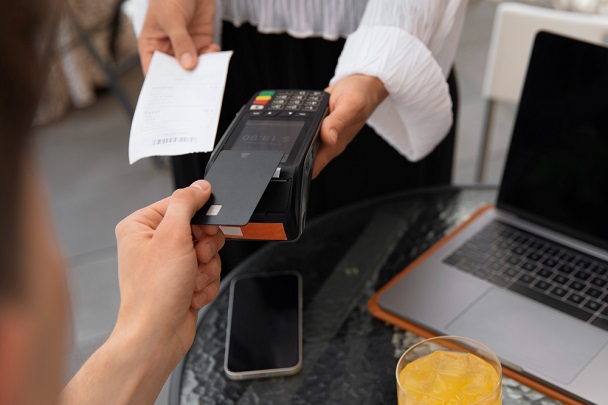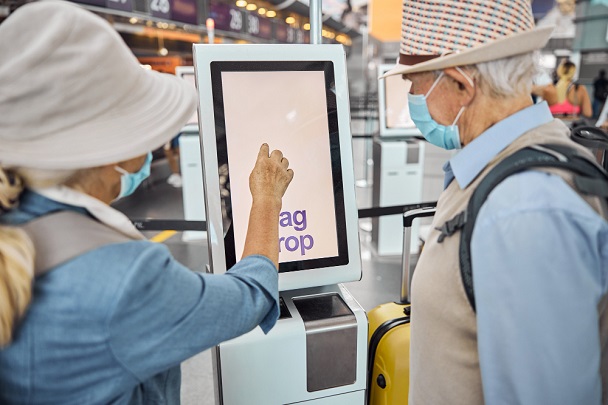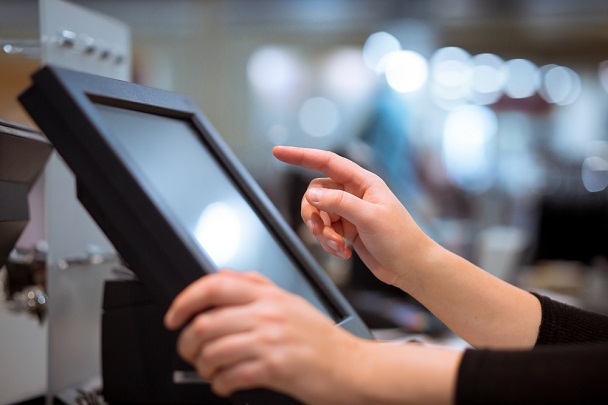
Different types of POS systems are available, each designed for specific types of businesses, like busy restaurants or trendy fashion stores.
Each system has unique features to help with the specific needs of these businesses.
We will explore the various POS systems, explaining their features and helping you choose the one that best fits your business goals. We’ll provide valuable insights to help you understand what’s behind your cash register and make the best choice for your business.
Key Takeaways
- Several POS system types exist, including mobile, tablet, terminal, online, self-service kiosk, multichannel and open-source systems. Each serves different business needs.
- Businesses should pick a POS based on their needs by considering customer payment preferences and required features like inventory management or sales reporting.
- Cost and available support are essential when choosing a POS system. Ensure there are no hidden fees, and check what kind of help the provider offers if you run into problems.
Types of POS Systems
Several options are available when choosing a POS system, including mobile POS, tablet POS, terminal POS, online POS, self-service kiosk POS, multichannel POS, and open-source POS.
Each type offers its unique features and benefits for businesses of all sizes.
Mobile POS

We see Mobile Point of sale systems as a game-changer for many businesses. They let you take payments easily from anywhere using a smartphone or tablet. This type of POS is great for small shops, outdoor markets, and quick-service restaurants.
It means staff can move around, cut down on lines, and give better service to customers.
These systems are often less costly because they use devices we already have, like phones or iPads. They’re perfect if you’re starting or want to keep things simple but still work well.
Plus, with cloud-based tech, your sales info is safe and ready whenever needed.
Tablet POS
Tablet POS systems use tablets as the primary interface for processing transactions. It offers flexibility and mobility, allowing businesses to take orders or complete sales directly from the floor or table.
The sleek design and user-friendly interface make it a popular choice for small businesses, restaurants, and retail shops. Some tablet POS systems come with integrated features like inventory and customer relationship management, providing additional value to the business.
These systems are also cost-effective and more accessible to set up than traditional POS terminals. With keyword-rich functions such as iPad POS systems and cloud ePOS systems, a tablet-based point of sale optimises efficiency without compromising performance.
Terminal POS
Terminal POS systems are the traditional point-of-sale systems in most retail stores and restaurants. The terminal has a computer, monitor, cash drawer, receipt printer, and credit card reader.
It’s stationary and usually located on a counter or checkout area. Terminal POS systems suit businesses with high transaction volumes and require robust hardware for daily use.
The terminal is linked to a central server where all transactions are processed and recorded. This system provides detailed sales reports, inventory management, employee tracking, and customer data storage.
Online POS

When considering an online POS system, it’s essential to understand that this type of system operates in the cloud. This means you can access your business information anywhere with an internet connection.
With an online POS, you can process transactions, manage inventory, and view sales reports using a web browser or mobile app. The flexibility and accessibility of online POS systems make them ideal for businesses that need to operate across multiple locations or want the convenience of accessing their data remotely.
Online POS systems are also known for their scalability, making them suitable for small and large businesses. They often offer subscription-based pricing models, which can be more cost-effective than traditional on-site systems.
Self-service kiosk POS

Self-service kiosk POS systems are like digital cashiers. They let customers scan and pay for their items without needing a cashier.
Customers can also browse the menu or catalogue, select what they want to buy, and complete the payment process independently.
These systems are often used in fast-food restaurants, cinemas, and retail stores.
Self-service kiosk POS systems offer convenience to businesses and customers by reducing wait times and streamlining the ordering process.
They can help improve customer satisfaction and increase sales by providing quick and efficient service.
These systems also empower customers to take control of their shopping experience.
Multichannel POS
Multichannel POS systems allow businesses to process transactions across various sales channels, like in-store, online, and through mobile devices. Customers can buy products or services through different platforms but experience a seamless purchasing journey.
With multichannel POS, inventory management becomes more efficient as it syncs across all channels, preventing overselling or stockouts. This system provides valuable insights into customer behaviour and preferences, helping businesses tailor their marketing strategies for better engagement and retention.
By leveraging multi-channel POS systems, businesses can enhance their operational efficiency while providing a unified shopping experience for customers regardless of how they choose to purchase.
Open-source POS
Moving on from the versatility of Multichannel POS, it’s essential to explore Open-source POS systems. Open-source POS software provides businesses with a platform that allows complete access to its source code.
This means that the software can be modified and adapted to suit the specific needs of a business, offering more flexibility for customisation compared to traditional POS systems. Businesses can enhance functionality, integrate with other systems, or tailor the user interface to their unique requirements.
Open-source POS solutions offer cost savings and are well-suited for small businesses looking for adaptable and budget-friendly options. With an open approach towards development and innovation, these systems empower businesses with greater control over their point-of-sale operations while encouraging community collaboration and support.
How to Choose the Best POS System

First, determine your business needs and consider customer needs. Look at available features, evaluate integration capabilities, and research cost and support options to make the best decision for your business.
To learn more about choosing the best POS system for your business, continue reading our blog!
Determine business needs
You must first determine your business needs to choose the best POS system. Consider factors like the type of business you run, the volume of transactions, and the specific features or functions that will benefit your operations.
Understanding these requirements will help you narrow the options and find a POS system that aligns with your business goals and processes.
After evaluating our own business needs, we can focus on finding a POS system that caters to those specific requirements. This ensures that we invest in a solution that meets our current needs and has room for growth as our business expands.
Consider customer needs
When considering a POS system, it’s crucial to think about what your customers need. The system should support various payment methods, including contactless payments and digital wallets like Apple Pay or Google Pay.
Additionally, it should facilitate quick and efficient transactions, minimising customer waiting times.
Furthermore, customer relationship management (CRM) features can help you track purchase history and preferences. This allows you to offer personalised promotions and discounts based on their buying patterns.
Look at available features
After considering your business’s and customer’s needs, it’s essential to look at the available features when choosing a POS system. Critical features like inventory management, sales reporting, employee management, and customer relationship tools are vital for retail businesses.
On the other hand, restaurants may need features such as table management, menu customisation, and kitchen display integration. It’s essential to assess which features align with your business requirements before deciding.
When evaluating available POS features, consider compatibility with additional hardware like barcode scanners or receipt printers for seamless operations. Furthermore, ensure that the system offers secure payment processing options and integrations with accounting software to streamline financial tasks.
Evaluate integration capabilities
When considering a POS system, evaluating its integration capabilities is vital. This involves examining how the system can work with other software and hardware, such as accounting tools or inventory management systems.
Integration capabilities are crucial for streamlining operations and ensuring smooth communication between different aspects of your business.
By assessing the integration capabilities of a POS system, you can ensure that it seamlessly fits into your existing setup and supports future growth. Look for systems that offer easy integration with popular third-party applications, allowing you to create a cohesive ecosystem that enhances efficiency and productivity across your business operations.
Research cost and support options
When considering a POS system, it’s essential to research the cost and support options. Consider factors like hardware, software, and payment processing fees for transparent pricing that suits your budget.
Additionally, explore the ongoing support provided by the POS provider, including training, troubleshooting assistance, and customer service availability. Remember that hidden costs can impact your overall investment in a POS system.
When researching support options, consider factors such as online resources, phone support hours, and any additional costs for technical assistance. Also, remember to check for user reviews or testimonials regarding the level of customer service provided by different POS system providers.
Conclusion
In conclusion, we’ve explored various POS systems, from mobile and tablet POS to online and self-service kiosk POS. These options offer practical solutions for different business needs.
Implementing the right POS system can significantly impact efficiency and customer service. Take the time to assess your specific requirements before making a decision. The right choice can propel your business towards tremendous success and improved operations.
Best POS software











